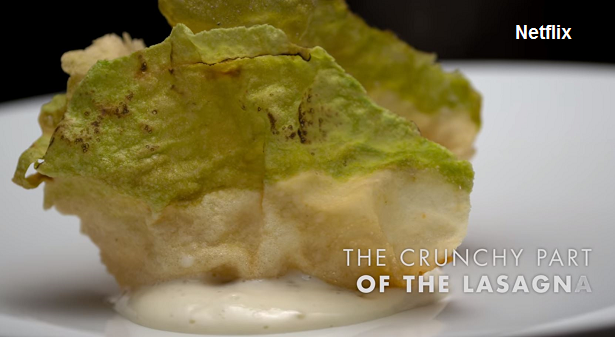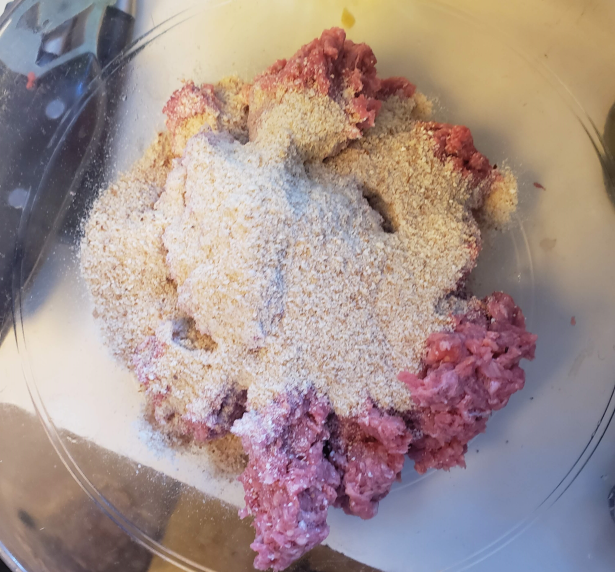KC 276 – Burgers, Three Ways, All Smash

Why hello there, and welcome back to Kitchen Catastrophes, where one man is slowly melting, oh god, the heat wave, please, send misters and hydration. I’m your Seriously-It’s-So-Hot-I-Can’t-Think, Jon O’Guin, and summer is finally here (Call a doctor). So in honor of that most sweltering of seasons, I thought I’d make some burgers, and revel in my family’s bourgeois accomplishments, because I’m an asshole, and the only thing that relieves my burning flesh is money. And After-Sun Moisturizer. If you want to get straight to grillin’, click this link. For everyone else, let’s dig in.
Settin’ Up to Smash
Fun fact: all those nerds who clicked the link are screwed: there’s no grilling in any of these recipes. And apparently no more GRAMMAR in this post! Two colons in one sentence…what are we, a Siamese sheep? (Or, I guess, to not be racist “a conjoined cow”.)
I was going to put a picture here, but it turns out almost all the pictures of two-headed calves are sad.
The POINT is that we actually decided to do these recipes because, in honor of my brother’s upcoming wedding, my mother bought a large out-door griddle. I assure you, the logic of the action makes sense when you know all the details, but they are too numerous to recount here. “Renting one for the wedding was going to be roughly half as expensive as just buying our own, so she figured “screw it, a couple hundred more dollars and I get a new toy to cook with.” Oh, I guess it was rather simple to explain.
As is the device itself, really.
Now, does that mean you can’t make any of these burgers with an equally absurd purchase? Not at all. The Flat-top griddle is, in many ways, just a big wide cast-iron skillet. (Well, OURS is a big, wide cast iron. If it were a stainless steel griddle it’d be a stainless steel skillet, and so on.) So you can make any of these recipes in a wide skillet, as long as you’re not overcrowding the pan. (Say, no more than maybe 2-3 burgers in a 12” skillet, and 2 at the most in a 10”. I wouldn’t recommend doing it on a standing counter-top griddle, unless it sits very low and sturdily, because…
Today’s recipes are all variations on the Smash-burger. Well, technical, the first on is just straight-up a Smashburger, and then the next two are variations. What’s a Smash-burger? Glad you asked, because it lets me fill time by talking food science.
Now, if you’ve ever cooked burgers on a grill at a party, you have certainly had several people gather around you and give various suggestions or make comments about the grilling meat. Why people do this is still somewhat unknown to science, because they were busy microwaving hamsters or something. (Weird science fact: that was the scientific use for one of the first microwaves. They were experimenting with cryogenically freezing hamsters, and then thawing them, and discovered that “diathermic heating” is very useful for warming them thoroughly without burning them. Amazingly, this process worked.)
They say your mind shuts down in cryo-sleep. All but the primitive side, the animal side…
What was I saying? Oh, yeah, cooking burgers. Anyhow, people gathered around your grill probably told you either to press your burger, or to definitely NOT press your burger. And for the record: the second group are probably MORE your friends: on a grill, pressing a burger will cause it to exude juices, including rendered fat, leading to a slightly drier burger, and more flare-ups. This isn’t necessarily a terrible/bad thing: the flare-ups do provide a level of flavor to the burger, if managed correctly, that is one of the hallmarks are truly grilled burgers. But done inexpertly or excessively, it’s essentially just going to dry out/burn your burger.
Now, the same thing kind of holds true on a griddle, but with an interesting twist: WHEN you press a burger matters. Specifically, if you REALLY press down a burger patty in the first 30-45 seconds of cooking on griddle, because the heat hasn’t permeated the meat yet, you actually experience almost NO loss of juices: instead, what you do is create a broader surface area to transmit heat through, allowing more fat to render, and the burger to cook faster. This is the ‘Smash-burger”, and it was first pioneered in diners and fast food restaurants around America, for the “cooking faster” purpose: a medium normal burger takes about 7 minutes to cook. A Smash-burger cooks for around 4. It also has other effects: the broader cooking surface creates a greater Maillard reaction, meaning more of the burger is complex crispy crust. The two are DIFFERENT, but not necessarily “better”. It’s like the edge piece of a brownie versus the center piece. (TECHNICALLY, it’s more like “the edge of a lasagna” versus the middle, or like, parmesan crisps versus a grilled cheese, since we’re dealing with proteins.)
Then again, as noted, a LOT of people prefer the crunchy part of lasagna
So, that’s the basic idea of a smash burger: a smaller burger patty, pressed thin, that fries quickly and produces a more complicated crust. (Which, as I started this tangent 4 paragraphs ago, is why I don’t recommend using a counter-top griddle: the amount of pressure needed to ‘smash” the burger is probably enough to damage the legs) What could go wrong?
Everything Goes Wrong
Oh boy, let me tell you, Title Jon is not fucking around with that promise. I don’t know if a single part of this process technically went totally “correct”.
Some basic steps: These recipes came to me from The Great American Burger Book, George Motz’s cookbook that I picked up…last summer, I think? If you missed my earlier discussions of Mr. Motz, a quick re-cap: George Motz is a Burger Historian (apparently a real profession consisting solely of him) who has eaten over 20,000 burgers, and has traveled around America learning about all sorts of regional burgers. He’s a BIG fan of Smash-burgers, so I knew I was going to eventually try to make them. Thus, the instant we got a big ol’ griddle, I knew what we’d be making on it.
I then proceeded to go a little insane, because the math doesn’t make sense. While I was doing that, Nate burnt our deck.
It looks bad, but we’re zoomed in pretty close.
Nate’s story is boring, so we’ll skip it. (Of course we won’t: He momentarily forgot that the back of the griddle would ALSO be hot, so he didn’t’ pull it away from the railing while it was heating up.) MY STORY is also boring, but at least has some moving parts: one of the constant refrains from George Motz is that he uses a #12 Salad scoop to portion out his beef. A “number twelve salad scoop” refers to a type of Ice cream scoop/food disher. You know, the big spoon things you use to scoop out ice cream, potato salad, etc? Specifically, all of those are marked with a number, between 100 and 6, referring to how many of the scoops you can get out of a quart of food. So a #12 scoop makes 12 scoops per quart. 32 ounces per quart means that the scoop is about 2 and 2/3rd ounces. THAT’S what George uses to portion his patties. Which is MADNESS, because he also asserts you get 8 patties out of 2 pounds of beef. THAT’S 4 OUNCES A PATTY, GEORGE Are you adding an extra half-scoop of meat on top of every scoop?
I can find nothing that confirms or denies either side how much meat he uses in his normal smash-burger, other than like, ONE person citing that George’s burgers are scoop-sized. (Which would produce 12 burger patties out of 8 pounds.) We gave up, and assumed he was generous with the scoops, so we made 4 oz balls, because we also couldn’t find #12 salad scoops. We had a #20, but no #12s. Then, pre-grease your girl with a very light coating of peanut oil, or another neutral, high-heat oil. NOT, as Nate chose to use, Extra Virgin Olive Oil. Take your meat ball, you plop it on the greased griddle, you sprinkle some salt (oh dear, no one grabbed salt. Jon, can you run that out here), and then press it down, and…oh, I see these spatulas are not strong enough to press down 4 ounces of meat.
It ALMOST looks normal, but I assure you, that is supposed to be a STRAIGHT extension from the handle.
That’s fun, and not something I have time to fix, because I’m working on the OTHER two burgers. The second burger is maybe George’s favorite, or at least the one he thinks is the coolest/most important: the Fried Onion Burger. IT’s a smash burger, with a pile of very-thinly sliced onions on top. Like, “see through, under an eighth of an inch thick onions”. The idea is simple: during the depression, people couldn’t afford a full 4 ounces of beef, so they’d make burgers that were 3 ounces beef, 1 ounces onion. Boom. Problem solved. (further frustrating fact: George DOES specify that he uses 3 ounce beef balls for this recipe in a couple videos, but in his cookbook, he uses the EXACT same ratio as a normal smash burger.) The thin onions fry in the beef fat, the onion juices flavor the beef, everything works together.
Fun fact: our mandoline cannot go as thin as it should for these onions. In my defense, Motz uses a full-on deli meat slicer to get his onions as thin as he needs them. I have to slap into a $30 Pampered Chef mandoline we got like, 8+ years ago.
I thought I had a picture of the CUT onions, but instead, past Jon made the inscrutable choice to photograph a whole onion. Presumably for a bit? Like, maybe he thought we’d just call it an “FOB” for the first paragraph or two, before revealing that the O stood for onion?
So of course these onions don’t cook as much as they should in the time we have, but again, I’M BUSY on the third burger: the SLUGBURGER. This one, at least, doesn’t drive me crazy. It has a similar history to the Fried-Onion Burger, in that it’s a Depression-era burger from the South. But instead of onions, it bulked up its patties with 1 cup of breadcrumbs.
So few body builders bulk with crumbs
Then, the one pound of meat is mixed with the crumbs, and split into SIX balls, so at least these (once you add the 2ish ounces of bread-crumbs) are roughly 3 ounce patties instead of 4s. And the bread crumbs actually ended up serving an interesting function: See, bread, as a protein structure, ALSO has Maillard reactions, and in particular, it crisps up under heat. Meaning that these slugbugers (which, supposedly, are named for the fact that at the time, “slug” was a slang term for “a nickel”, and the burgers cost 5 cents. I only note “supposedly” there, because the math is a LITTLE wobbly on that: a pound of hamburger in 1930 was like, 12 cents. So if they made 6 burgers per pound, that’s ~2 cents just for meat per burger. That’s a VERY narrow margin for bread and labor. But maybe they cut even thinner back then. )
Anywho, the slug burgers produce an even CRISPER outer crust for the burger, and are traditionally served with pickle and mustard, but we didn’t have time for that, as we were flailing wildly, trying to get ANYTHING to work, as our slug burgers smashed the WORST of any of the burgers.
Look at that almost crescent moon shape.
In the end, we had 3 pounds of hamburgers, making 14 total burgers in three different ways, and for all the stress of the 30ish minutes to took to make all of them…the results were pretty good. Not amazing, but given the insane number of issues we encountered, the fact that they were edible at all was kind of wild.
Of the three, I would rank them: Slugburger, FOB, Smash. Our potato buns were, I think, a little bigger than the style Motz uses (Looking into it, they were 2.6 oz versus 1.9, so around 30% heavier), which made the burgers a little more bread-heavy, but the burgers were still good. I just felt like the Bolder flavor of the onion made it more interesting than the Smashburger, and the crisper crust on the Slug really made it more interesting. I’ll definitely be trying the recipes again (We have already bought what we hope are sturdier spatulas) and I hope you give them a chance too.
THURSDAY/FRIDAY: I MIGHT DO SOMETHING CRAZY. SOMETHING I SUGGESTED YEARS AGO, BUT WANDERED OFF FROM.
MONDAY: ALRIGHT, I’VE GOT STUFF PREPPED FOR THE NEXT LITTLE WHILE. SO IT’LL PROBABLY BE…LET’S DO CHICKEN. CHICKEN SALAD!
Let's cook these
Recipes
George Motz Smashburger
Makes 4 burgers* (Halved from original recipe)
Ingredients
1 pound freshly ground 80/20 Chuck (in a hurry/if compromising, a generic 20% fat ground beef from a butcher you trust/like will do)
Kosher Salt
4 slices American cheese (optional)
4 buns
a few drops neutral oil (less than ¼ tsp)
Preparation
Scoop (or loosely form) beef into 4 balls. Preheat a griddle or large skillet to medium high. Toast your buns, if desired. Spread oil over preheated grill.
Place 2-3 meat balls on the cooking surface, and sprinkle with salt. Press to roughly ¼” thickness. Cook 90-seconds to 2 minutes, until red liquid is beading on the top of the burger, then flip, and cook another 2ish minutes.
While burger is flipped, if using, lay the slice of American cheese on top for 2 minute cooking time.
Slide onto bun, and serve.
Fried-Onion Burger
As Smash burger, except
ingredients
1 large Vidalia onion, sliced as thin as possible.
Preparation
After placing meat ball on prepared cooking surface, light press a golf-ball sized bundle of onions onto the top of the burger, before committing to the full press. Otherwise, cook as normal.
Slugburger
As Smash-Burger, except
Ingredients
1 cup breadcrumbs (preferably from blitzing dried bread)
Preparation
Mix bread crumbs into meat, and form into 6 balls instead of 4. Otherwise, cook as directed.













